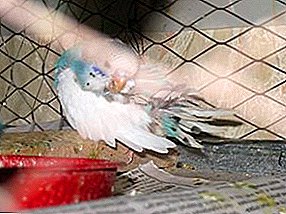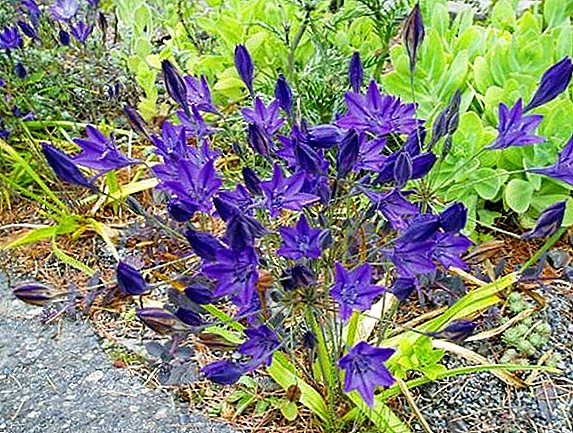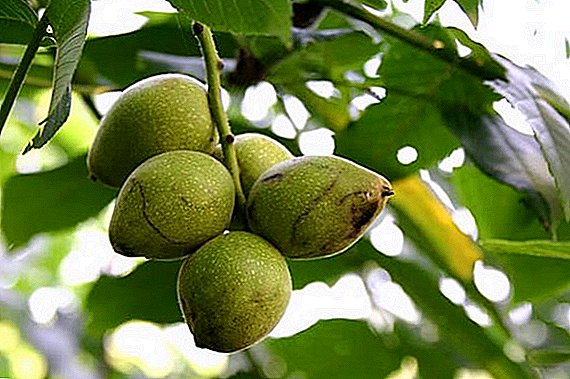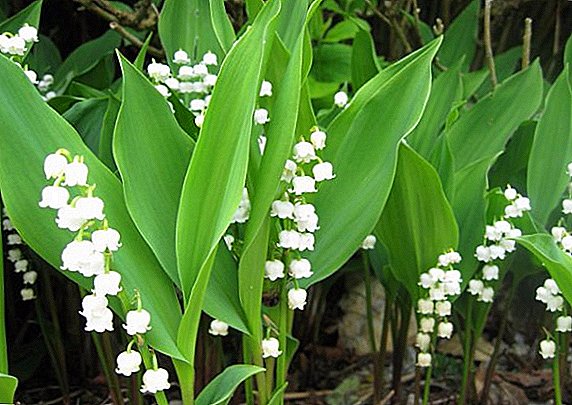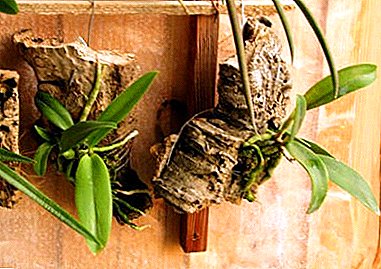
Orchid - a beautiful exotic plant, from which it is impossible to tear his eyes. Often, having acquired one type of orchids, the florist cannot stop and begins to create a whole collection of these magnificent flowers at home.
But the plant is quite voluminous, and on the window sills the place for the installation of flower-pots quickly ends. In this situation, you can save space by planting a flower with your hands on the hanging blocks. They not only save space, but are also the most natural way of landing.
What it is?
A block is a piece of coconut, bark, a simple snag, to which the plant is fixed and hung on a wall or ceiling. This is a great alternative to the usual pot and flowerpots.
What you need to consider?
The development, growth and life of a plant depends on where the plant is planted.. But you should know what conditions are most appropriate for a particular type of orchid, as it is necessary to take into account the humidity, temperature and indoor climate. Landing on the snag entails some features in the care, and the creation of a certain microclimate for the plant.
Comparison with other growing methods
 As you know, orchid is an epiphyte that grows in the wild on tree trunks. That is why the use of blocks for planting is most preferable for this type of plant. So they will be as close as possible to the natural conditions of the content. The advantages of this method of planting a lot, the main - excellent aeration.
As you know, orchid is an epiphyte that grows in the wild on tree trunks. That is why the use of blocks for planting is most preferable for this type of plant. So they will be as close as possible to the natural conditions of the content. The advantages of this method of planting a lot, the main - excellent aeration.
The roots of the plant constantly need air and the block is a great option.. With such a planting, there will be no rotting of the roots, as often happens when growing orchids in pots.
In addition, an orchid growing on a block in the interior will look very organic. It is enough to fix several such items in the room, and it will become beautiful and fresh, while the look of the interior will become exotic.
For what kind of method is suitable?
Most orchids grow great on a block.. The main types include:
- oncidium;
- aerangis;
- phelanopsis;
- Cattleya;
- askocentrum
Important: Planting will be much easier if the flower is dried, or its leaves grow down.
What material to choose?
There are certain qualities that a block material must possess.:
- durability and strength, as the orchid often should not be replanted;
- at the same time you need to choose a material that will not rot;
- it is very important that the material does not contain impurities harmful to the plant.
For planting, you can use a piece of bark:
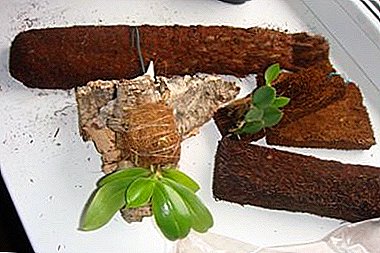 Spruce and pine - you can apply as a last resort. The material is very quickly stratified, does not tolerate changes in humidity and does not last very long.
Spruce and pine - you can apply as a last resort. The material is very quickly stratified, does not tolerate changes in humidity and does not last very long.- Cork bark - can be used both pressed and normal.
- Oak bark is an excellent, durable material.
- Elderberry and Amur velvet.
In the cities there are a lot of poplars, but you cannot use this bark, as it contains substances that are very harmful for the orchid.
Normal wood cannot be used for a block, as it starts to rot quickly., the mold and fungus appears on it from moisture. You can use:
- mingrovy snags;
- wood red, black and iron trees;
- grapevine;
- fern roots.
You can also use neutral synthetics - foam.
We recommend watching the video about the features of orchid blocks:
Step-by-step landing instructions
There is nothing difficult, put the plant on a piece of bark or snag. Consider step by step how to do it correctly:
- Prepare a suitable snag by giving it a shape that you like.
- At the top of the hole to make a hook.
- The mount should be made of soft insulated wire, or other durable material.
- Attach the orchid to the snag. It should be immediately noted that the leaves of the plant should look strictly down, so moisture will not be collected at the point of growth.
- The plant is attached with a soft cloth or synthetic mesh, you can use a fishing line. If you plan to maintain high humidity, the substrate under the roots of the orchid is not needed.
- But if this is not possible to achieve, then a layer of sphagnum is laid between the bark and the orchid, which will provide moisture to the roots and they will not dry out.
It is also possible to transplant to the bark all the epiphytes that are currently growing in a pot. But we must remember that transplantation should be carried out only during the period of active growth.
We recommend to watch a video about the features of orchid transplanting on blocks:
Nuances of care
 An orchid settled on a block will require high humidity, it should be at least 80%.
An orchid settled on a block will require high humidity, it should be at least 80%.- As for lighting and temperature, there is no difference in the cultivation of orchids in a flowerpot or on a snag.
- There should be a lot of light, especially in the period of active growth, the temperature is 20-25 degrees. Exclude direct sunlight.
- It should be understood that the plant should be often watered or sprayed, as the roots will be in the open state.
- Spraying should be done once every two days, but depending on the conditions of keeping and the type of orchids, this will need to be done more or less often - look at the plant.
- Before watering, you need to make sure that the roots are not wet, so as not to cause rot.
We recommend to watch a video about the care of an orchid grown on the block:
Possible problems and difficulties
Many people think that there are no problems when planting an orchid on a block., as the plant is in close proximity to natural conditions. But it is not so:
- The first thing that you may encounter when transplanting an orchid from a pot to a snag is the incapacity of the roots for a constant flow of air. In a pot, the plant is in a humid environment, and with a minimal influx of oxygen, and often after a transplant, the orchid cannot adapt. Old roots can dry up, but do not worry, as soon there will be new processes that will feel great outdoors.
- The problem is often the inability to create the right amount of moisture in the air. Therefore, when deciding to plant an orchid on a block, you need to weigh the pros and cons.
- Often the difficulty is the choice of the right place for the flower to grow, as it is important to create a comfortable temperature and lighting.
But the most important thing in breeding orchids is not a way of planting, not the color of the flowerpots and the type of block, but the conditions in which the plant will be. If you do not do this, then no matter how you plant an orchid, it will feel bad, sick.
Often, when planting a plant on the bark, experienced growers advise to organize a mini teplichka. It will be easier to maintain optimal moisture for the orchid.
Conclusion
The orchid is a very capricious and demanding plant, but it very willingly responds to the correct care with an active and long-lasting flowering. Want to make your interior exotic and unusual, plant soy beauty on the block, which will be suspended on the wall or the ceiling.


 Spruce and pine - you can apply as a last resort. The material is very quickly stratified, does not tolerate changes in humidity and does not last very long.
Spruce and pine - you can apply as a last resort. The material is very quickly stratified, does not tolerate changes in humidity and does not last very long. An orchid settled on a block will require high humidity, it should be at least 80%.
An orchid settled on a block will require high humidity, it should be at least 80%.



